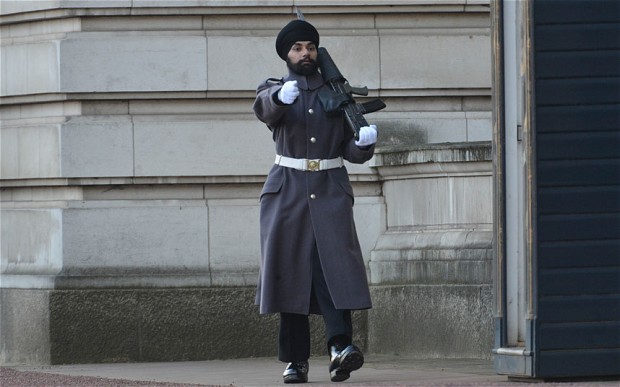I’ve been rather surprised by all the media attention over the appearance of Guardsman Jatenderpal Bhullar on parade duty outside Buckingham Palace this week. For sure, Guardsman Bhullar, 25, has become the first Sikh to wear his turban on guard duty outside the palace. But it is not all that long ago that turban-wearing Sikhs were a familiar feature of Britain’s military landscape, particularly when it came to fighting world wars.
During the glory days of the Indian Empire, Sikh soldiers were highly regarded by British officers for their martial prowess and never-say-die attitude. Sikh sepoys regularly fought alongside British soldiers during the frequent tribal revolts on the Afghan frontier in famous regiments such as Rattray’s Sikhs, and the young Winston Churchill nearly lost his life rescuing a wounded Sikh when he fought in the Malakand campaign of 1897. At the Battle of Saragarhi on 12 September 1897, twenty-one Sikhs from the Indian Army’s Sikh Regiment won awards for gallantry.
There were, of course, the occasional moments when the loyalty Britain’s Sikh soldiers was called into question, most notably during the 1857 Indian Mutiny. But their bravery and courage became a mainstay of the British Army until Indian Independence, and thousands of Sikhs fought and died for Britain during two world wars.
Guardsman Bhullar, then, represents a long and distinguished tradition in the British Army, which today is still reflected in the traditional Sikh battle-cry, “Bole So Nihal, Sat Sri Akal” (Victory belongs to those who recite the name of God with a true heart).
Source: Con Coughlin, Telegraph
 Sikh Sangat News Celebrating Sikh culture and sharing Sikh voices
Sikh Sangat News Celebrating Sikh culture and sharing Sikh voices

